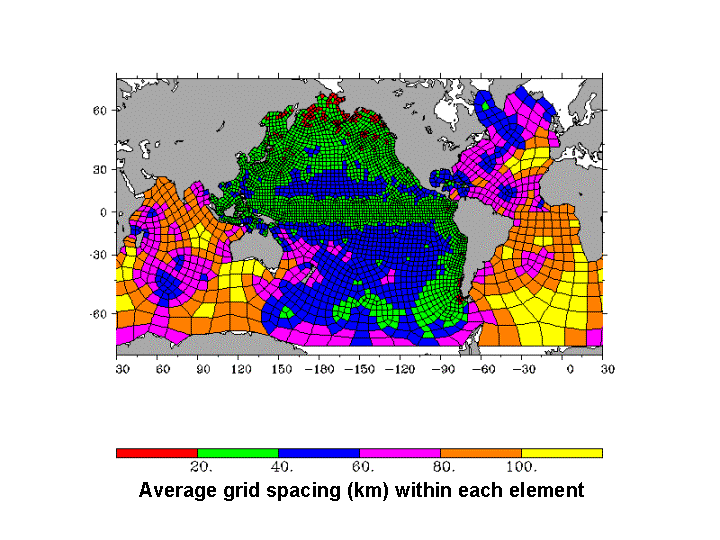

In the previous section on resolution, we saw the need for a grid in space and time. First we will discuss horizontal grid types.
Horizontal grid types can be categorized as:
Let's consider finite difference grids first, as they are the most common horizontal grid system used for regional, basin-wide, and global ocean models at the present time.
The schematic below shows a simple model grid system in a plan view.
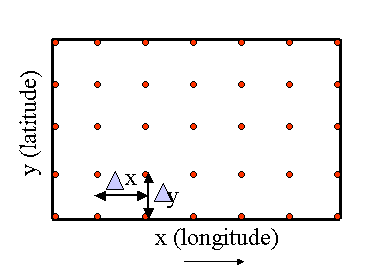
The red dots represent points in space at which we solve say the Temperature equation. In early attempts at modeling, the velocity components, u and v, were located at the same locations. This is known as an "A" grid. However, the accuracy of the solutions was poor. The "B" grid has the velocity components at the verticies of the grid boxes for temperature as shown below:
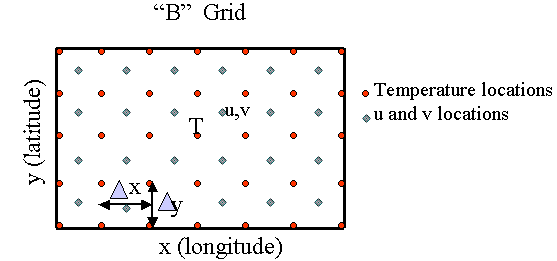
The "C" grid has the u and v components at different locations for ease in computing the finite differences across the grid boxes:
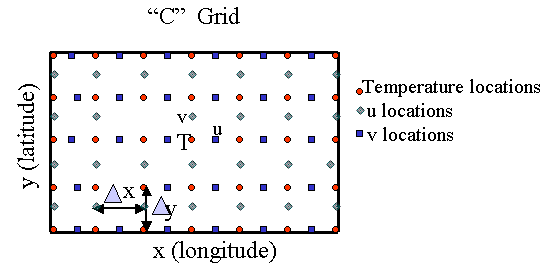
Both B and C grid schemes are used in finite-difference models today.
Along with these simple grids, where the  x
and
x
and  y are the same throughout the domain, you
can have a nested grid.
y are the same throughout the domain, you
can have a nested grid.
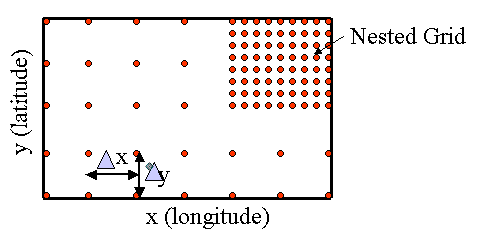
A nested grid allows for higher resolution in areas where it is needed, without expending computer resources in areas where it is not needed.
Transforming from one grid type to another:
For numerical reasons, a grid of one type may be used for computing model quantities. Another type of grid may be more practical for displaying information to a user of the model output. Let's take a simple example: A model may be computed on a mercator grid, with the velocity grid shifted to between the locations of the temperature and salinity points. The user may, for whatever reason, want to see the output on a regular grid, and have velocity, temperature, and salinity all at one point. To make this conversion, it is necessary to interpolate the data from the computational grid (sometimes referred to as the native grid) to the user grid. There are many ways to do the interpolation. To produce an interpolated output that is consistent with the simulation, the interpolation should conserve the properties that it is interpolating (e.g. you don't want to change the overall average temperature from the original).
As discussed earlier, Cartesian coordinate systems do not have to be strictly rectilinear. The figure below shows a curvilinear finite difference grid for the Monterey Bay region. This grid allows for finer resolution near the coast where the variability is highest.
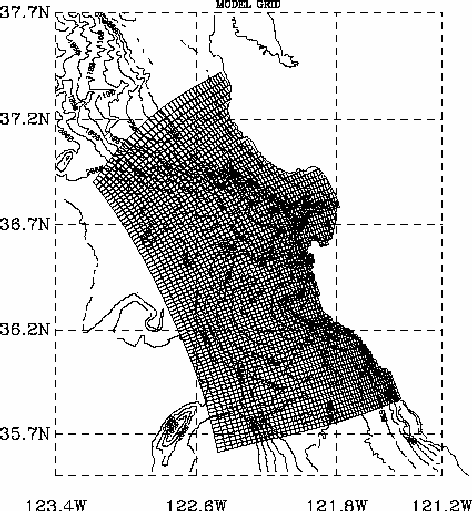
Finite Element models.
Finite element methods are the second most commonly used horizontal grid system for ocean models, and are especially popular for littoral ocean applications. In a finite element grid, the variables are solved for within a triangular shaped volume, rather than at single points, as in the finite difference grids shown above. An advantage of finite element grids is that the size of the triangles can be varied continuously throughout the domain which more easily allows variable resolution, and which is especially good at following complex coastlines, as in an estuary. For a finite difference grid to achieve the same effect, multiply nested domains would be needed, and still there would be a number of grid points over land, which wastes computer resources. The disadvantage of finite element grids is that they are more difficult to set up than finite difference grids. An example of a finite element grid of the Yellow Sea and Sea of Japan region is shown below:
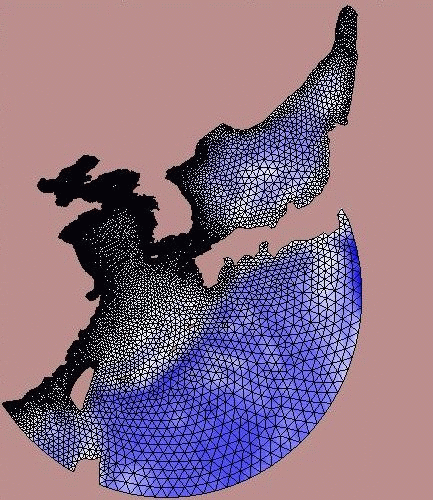
Spectral models.
While spectral transform methods are widely used in atmospheric modeling, they are rarely used in ocean modeling, because the presence of land boundaries makes their application much more difficult. There are some ocean models, such as the Spectral Element Ocean Model (SEOM) (see figure below) that use a combined global spectral / local finite element approach. None of the Navy operational models use the spectral methods.
